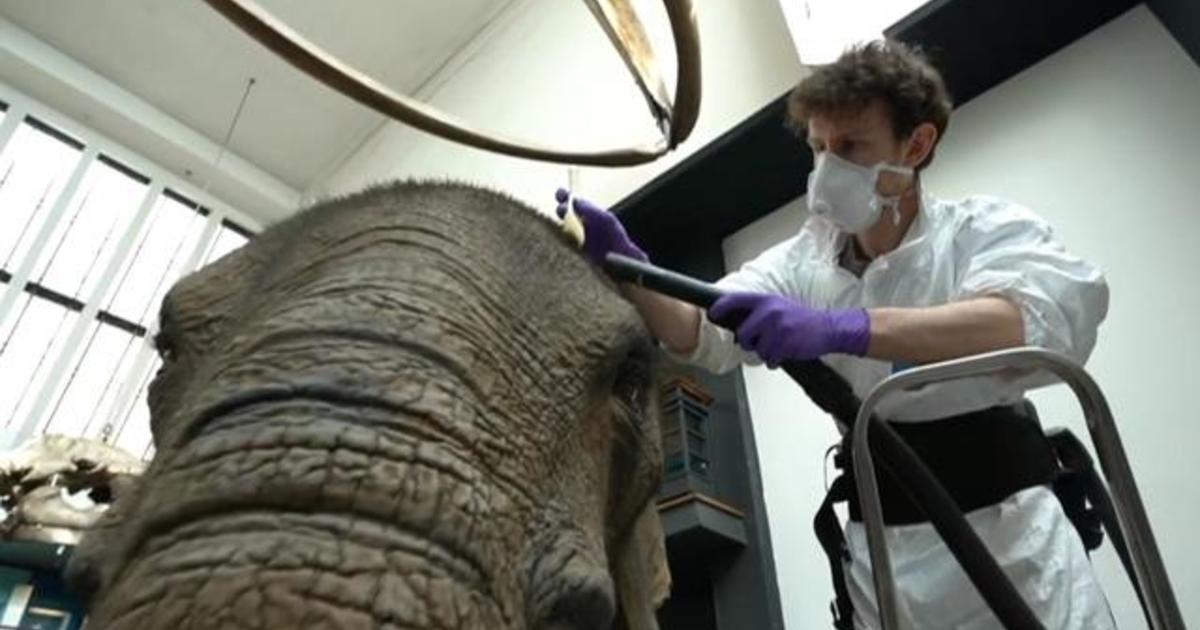
The world’s museums have been resembling scenes from the 2006 comedy movie “Night at the Museum.” They’ve been quiet, empty and vacant.
Visitors are nowhere to be found, with an estimated 90% of museums closed due to COVID-19. That includes the Natural History Museum in London.
On a typical day, 15,000 people visit the museum, but now, a skeleton staff of just 20 people walk its halls. The exhibits may be in hibernation but conservator, Claire Kelly, is as busy as ever hunting down the biggest threat to the museum: moths.
“There’s a real issue with taxidermy because the pests will attack the fur,” Kelly told CBS News’ Holly Williams.
Conservators who spend their day cleaning and dusting rooms full of massive mammals said in some ways, the lockdown has been an opportunity to deep clean.
“Yeah, it’s been kind of a bit of a silver lining, I guess, with lockdown, because we, unfortunately, don’t have any visitors at the moment, work that we’d normally have to be doing either really early in the morning or late at night, in the day we’ve now got the time to actually come through and work through all these galleries,” Robert McCleod said.
The museum is also fixing its roof putting “Sophie,” the world’s most complete Stegosaurus skeleton and usually one of the museum’s most popular exhibits, inside a mesh cage.
Cameras at one point were a familiar site to the museum — Sir David Attenborough filmed a documentary about it. The museum also played a starring role in the 2014 blockbuster movie “Paddington.”
The halls are no longer lit by camera lights; instead they are filled with an eerie feeling.
“Is it a bit spooky sometimes being in here and being in rooms full of skeletons,” Williams asked Lorraine Cornish, the museum’s head of conservation.
“It’s like that game of statues where you move around and then when someone looks at you, stay still,” she said. “So sometimes I feel that they’re all just like having a party. And then I turn around and they’re all still, just my active imagination, I think.”
She’s worked at the Natural History Museum for 40 years. The museum first opened in 1881. Cornish said the building was bombed by German aircraft during the blitz, though many of its most precious specimens had already been moved to the countryside for safety. World War II also saw part of the museum become a workshop for British intelligence where she said ingenious gadgets for spies were made.
But the museum had never seen anything like the coronavirus pandemic, an invisible enemy that’s kept visitors out for most of the last year. Cornish said the exhibits themselves are yearning to be seen.
“They’re waiting and they’re ready and they just want to welcome people back,” she said.
In the bowels of the building, conservators are making preparations for when the museum reopens to the public in May. Thanks to the quiet team of people protecting this treasure trove, the history of the natural world and its extraordinary evolution is just months away from being shown again.

